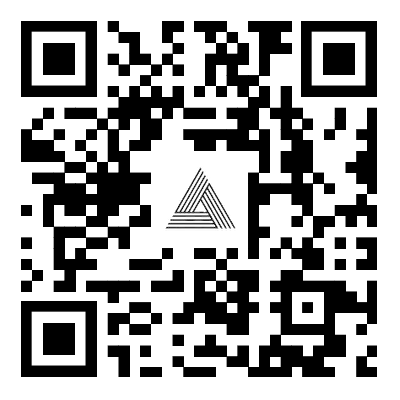The Functions of Baby Strollers
2024-06-11
Baby strollers, also known as prams or pushchairs, are essential tools for parents and caregivers, providing a convenient and safe way to transport infants and young children. These versatile devices come in various designs and feature sets to cater to different needs and preferences. Here are the primary functions and roles of baby strollers:
### Functions of Baby Strollers
1. **Transportation**:
- **Convenient Mobility**: Facilitate the easy transportation of infants and toddlers, allowing parents to move around with their children without carrying them.
- **Travel Convenience**: Essential for travel, whether it's a walk in the park, a shopping trip, or a longer journey.
2. **Safety and Security**:
- **Secure Seating**: Provide a safe and secure place for the child to sit or lie down, often featuring harnesses or belts to keep the child securely fastened.
- **Protective Features**: Include protective elements like sun canopies, rain covers, and footrests to shield the child from weather elements and provide additional comfort.
3. **Comfort**:
- **Comfortable Ride**: Designed with padded seats, adjustable recline positions, and suspension systems to ensure a smooth and comfortable ride for the child.
- **Ergonomic Design**: Features ergonomic handles and adjustable settings to ensure comfort for the parent or caregiver pushing the stroller.
4. **Storage and Convenience**:
- **Storage Space**: Equipped with baskets, pockets, and trays for storing baby essentials such as diapers, bottles, toys, and personal items.
- **Foldability**: Many strollers are designed to fold easily, making them convenient to store and transport, especially in car trunks or when using public transportation.
5. **Versatility**:
- **Multiple Configurations**: Some strollers offer multiple seating configurations, such as forward-facing, rear-facing, or even bassinet options for newborns.
- **Adaptability**: Can often be adapted with car seat attachments, making it easy to move a sleeping baby from the car to the stroller without disruption.
6. **Developmental Support**:
- **Interaction**: Allows for face-to-face interaction when using rear-facing positions, promoting bonding and communication between the parent and child.
- **Exploration**: Forward-facing positions enable the child to explore and observe their surroundings, stimulating their curiosity and learning.
### Key Features of Baby Strollers
1. **Safety Harness**:
- **Five-Point Harness**: A standard safety feature that secures the child at the shoulders, waist, and between the legs, preventing falls and ensuring stability.
- **Three-Point Harness**: Found in some lightweight strollers, securing the child at the waist and between the legs.
2. **Reclining Seat**:
- **Adjustable Recline**: Allows the seat to be reclined to various angles, providing comfort for the child whether they are sitting up or lying down.
3. **Suspension System**:
- **Smooth Ride**: Built-in suspension systems absorb shocks and bumps, ensuring a smoother ride on different terrains.
4. **Canopy and Weather Protection**:
- **Adjustable Canopy**: Shields the child from the sun, wind, and rain, often featuring UV protection and peek-a-boo windows.
- **Rain Covers**: Some strollers come with or are compatible with rain covers for additional weather protection.
5. **Brake System**:
- **Parking Brakes**: Secure the stroller in place when stationary, preventing it from rolling away.
- **Hand Brakes**: Provide additional control and safety, especially on slopes.
6. **Swivel Wheels**:
- **Maneuverability**: Swivel wheels enhance maneuverability, making it easier to navigate tight spaces and turns.
- **Lockable Wheels**: Can be locked in place for stability on rough terrains or when jogging.
7. **Adjustable Handlebar**:
- **Ergonomic Handling**: Adjustable handlebars cater to parents of different heights, ensuring comfortable and ergonomic handling.
### Types of Baby Strollers
1. **Standard Strollers**:
- **All-Purpose Use**: Designed for everyday use, featuring a balance of comfort, convenience, and durability.
2. **Lightweight Strollers**:
- **Portability**: Easy to carry and transport, ideal for travel and quick trips.
3. **Jogging Strollers**:
- **Fitness**: Built for jogging and running, with large wheels, robust suspension, and a fixed front wheel for stability at high speeds.
4. **Travel Systems**:
- **All-in-One**: Include a stroller and a compatible infant car seat, providing a complete solution for both car and stroller travel.
5. **Double and Triple Strollers**:
- **Multiple Children**: Designed to accommodate two or more children, with side-by-side or tandem seating arrangements.
### Summary
Baby strollers play a crucial role in ensuring the safety, comfort, and convenience of transporting infants and young children. Their primary functions include providing secure and comfortable transportation, ensuring the child's safety and security, offering convenient storage and adaptability, and supporting the child's developmental needs. Key features such as safety harnesses, reclining seats, suspension systems, weather protection, brake systems, and adjustable handlebars enhance the functionality and user experience. With various types available, including standard, lightweight, jogging, travel systems, and multi-child strollers, parents can choose the best option to suit their specific needs and lifestyle.


